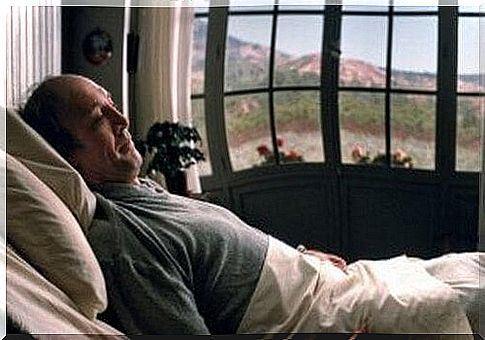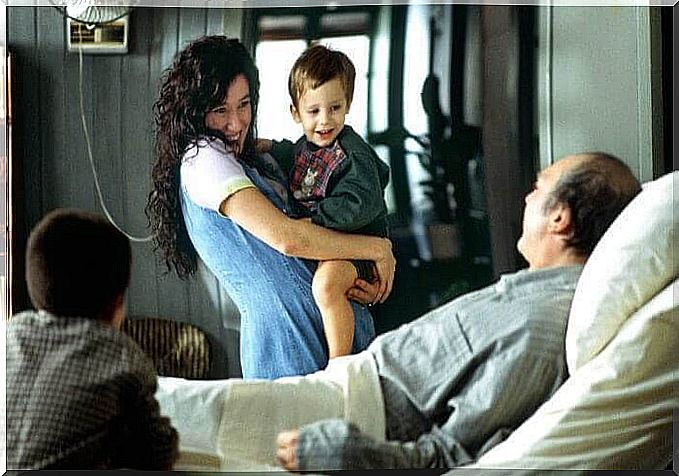Sea Inside: When Living Becomes An Obligation

Mare Inside is a 2004 Spanish film directed by Alejandro Amenábar and starring Javier Bardem as the protagonist. The film is inspired by a true story, the life of Ramón Sampedro, a man who, after being quadriplegic, decides to end his life.
Ramón Sampedro’s story became a media case in Spain, a country where euthanasia is not legal ; 20 years have passed since Ramón Sampedro’s death and even today Spanish law does not provide for assisted suicide, which is why this story continues to be in the spotlight.
Mare Inside has rekindled the flame of the controversy and reopened a case that was not yet completely closed, as Ramona Maneiro, the woman who had helped him die, had been acquitted for lack of evidence, but when the crime had already been prescribed, he had confessed to being guilty. The first film, inspired by this story, was Condenado a vivir (literally Condemned to live ) in 2001, but the most recognized and acclaimed is undoubtedly Mare Inside , which won the Academy Award for Best Foreign Language Film.
Despite its success, this film also received negative criticism from the press and some quadriplegic associations that questioned Sampedro’s attitude towards life. The film, however, does nothing but bring us closer to a real and very media case, and to the question of the right to a dignified death, to the freedom to decide to which Sampedro appealed.
Ramón Sampedro, in addition to the media and cinema legacy, shaped his story in two written works: Cartas desde el infierno ( Letters from hell ) and Cuando yo caiga ( When I fall ) , the latter posthumous. All of this has made Ramón Sampedro a familiar figure to most Spaniards and a leading figure in the struggle for the right to euthanasia.

Sea inside, live or die?
Ramón Sampedro was born in Galicia in 1943, worked as a fisherman until the age of 25, after which he was the victim of an accident that forced him into a bed for the rest of his life. Aware that he would never be able to move again and that his life would always depend on caring for other people, Ramón Sampedro decided he wanted to die, and he wanted to do it in a dignified way, which is why he became the first Spaniard to apply for assisted suicide. This turned his case into a source of controversy and a fight with the courts.
Seeing that his wish could not be fulfilled in the name of the law, he decided to do it secretly by relying on the help of his friend Ramona Maneiro, since due to his condition as a quadriplegic he could not do it alone.
Ramón recorded a video while drinking a glass of water containing potassium cyanide; in it he explained why he believed he deserved to die with dignity and how he had carried out this action, he also stated that they should not look for culprits as he had been the mastermind of the plan and the people who had helped him had simply lent him their hands.
The film shows us the different reactions to Ramón’s decision : on the one hand, the various family members are opposed to death. His brother claims that they only want the best for Ramón and that this does not coincide with death. On the other hand, we find some characters who feel empathy for Ramón, especially the lawyer Julia and the neighbor Rosa, who at first shows against it, but will end up helping Ramón.

Rosa’s character will be crucial, she is partially inspired by Ramona Maneiro. At first, she approaches him after seeing him on television and believes she can help him regain the will to live, however, she will end up falling in love with him and realizing that she has to accept his decision.
Julia will take the case to the court; unlike Rosa, she understands Ramón from the beginning, as she too suffers from a degenerative disease and often thinks about suicide.
Why did Ramón Sampedro want to die? Why did he say his life was not worthy and dignified? Countless groups reacted to his statements by assuring that a quadriplegic person can be happy, can live in dignity.
One of the most critical moments from this point of view, we see it when a quadriplegic priest goes to visit Ramón, both discussing ethical, moral and religious issues. The priest insists that life belongs to God and that living does not just mean running or moving your arms; you can live in a wheelchair in the most dignified way possible. Sampedro no longer wants to live, he does not want to continue fighting, nor accept the wheelchair, he prefers to die in peace.
All this makes us reflect on the absence of a right or correct position in this regard. There is no better choice between living or dying, they are simply personal and individual decisions, in which we should not intervene. It will seem absurd for everyone to force a person to die or to convince them to die, but then why force someone to live?
Sea inside, the controversy over euthanasia
Euthanasia is a very delicate topic because, in addition to the personal decision, other factors intervene, such as cultural, religious, the bereavement of family members and loved ones, etc. Accepting death is not easy for anyone, but accepting that someone wants to die is even more complicated.

For Ramón Sampedro, life had become an obligation, his disability was hell for him and, instead of trying to regain the will to live, he decided to fight to die, to die with dignity and without anyone having legal problems as a result of this. . At Sea inland , we are witnessing this legal battle that goes down to the present day.
In some countries such as Belgium, Holland and some states of the United States, euthanasia is legal, it falls with total normality in the health sector and more and more people request it. The desire to die so as not to suffer has always existed and cases like that of Ramón Sampedro are not so rare, but they have always remained in the shadows and took place without the consent of the law.
The media aspect of the case, the video of his death, the film Sea inside , opened a heated debate in Spain; a debate which, as we have seen, puts an infinite number of positions in conflict. This confrontation, however, leads nowhere because the truth is that, if someone is convinced of their decision, they will do everything possible to make it come true.
Family members are certainly the first people to be affected and conditioned and, at first, reluctant. However, in these cases, understanding, love, and even psychological support from family members can be crucial on this path to acceptance.
We cannot judge anyone for their decisions or acts and neither can we force them to change their opinion; what’s the right thing to do? Perhaps there is no right thing but to respect a decision. Sea Inside shows us that we can agree or not, but in the end love and understanding will be stronger than any personal idea.









